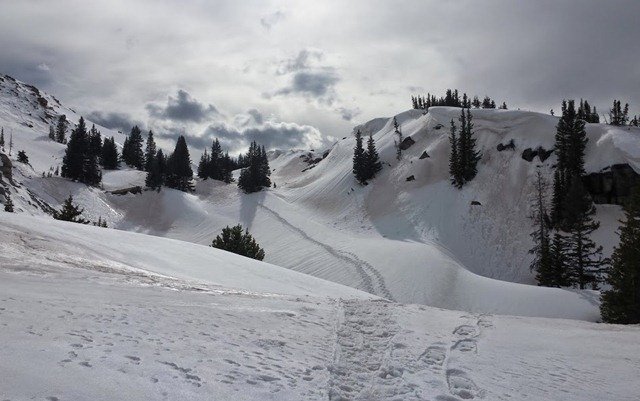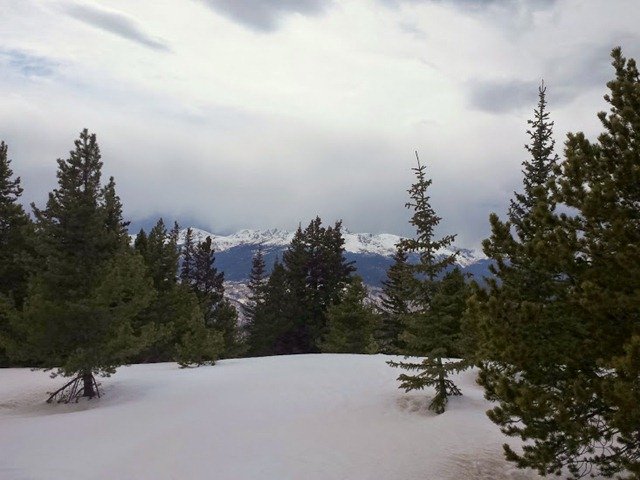A few weekends ago, Kirk and I joined some friends on a hiking trip into the backcountry. One of the reasons I stay in shape is so that we can enjoy adventures all around us. We can go for a run in Muir Woods, see all the sites in Athens in 1 day (yes we did!), or hike a 14er. So when some friends asked us to join them on a 6 mile hike to a hut, we said yes! How bad could it be?
It was the hardest snowshoe/hike and one of the hardest things I have ever done! It felt like doing a marathon without training, which is probably a good comparison. 6 1/2 miles of snowshoeing on soft snow up the side of a mountain. It caught both Kirk and I completely by surprise and resulted in a lot of complaining (mostly me), giving most of my pack weight to Kirk (my back hurt), and endless hiking (seriously).
What is a Hut Trip?
Here in Colorado, the 10th Mountain Division manages a system of 34 backcountry huts which are connected by 350 miles of “trails”. They are intended to be reached by non-motorized vehicles, typically backcountry skiing or snowshoeing in the winter. The huts are communal style, which means they have individual sleeping platforms with mattresses and pillows, but they are fairly open. Most of the huts accommodate 16 people, but there are some smaller and larger options.
What You Need to Be Prepared
Some of the huts are easy to reach and involve a moderate, 1-2 mile hike. In our case, our friend who organized happened to choose a hut that includes one of the more difficult hikes. One of the couples who joined us was on their 20th hut trip and said this was by far the most difficult. Start by asking around for recommendations for good huts for first timers. We heard Shrine Mountain Inn is an easy option, with running water and a sauna at the hut!
If I had to do it again, there are several things that I would bring with me to make the experience much better. I won’t be doing another hut trip until I have checked all these things off the list.
Compass & Map of the Hike
Most smartphones have compass ability, so you can always download a compass app. Even better, get a small compass that you can bring with you. You’re going to need the compass to follow your map. And YES, you need one. I’m embarrassed to say we didn’t bring a map and just followed written directions we found online. The trail is vaguely marked, but it intended to be confirm the route you find using your map. Don’t skip this step – get a map and learn how to use it.
Backpacking Pack
I don’t own a hiking backpack, so we tried to use my snowboarding backpack to carry my gear. That resulted in my lower back hurting barely an hour into the hike, followed by transferring much of my gear to Kirk’s bag. Even with the light load, carrying extra weight on my back without properly fitting on my hips caused unnecessary discomfort.
If you’re going to take a long hike with your gear to stay overnight, get a bag that is made for that. It should be fit to you (kind of like running shoes), so that the weight is distributed appropriately to help prevent back pain. We visited an outdoor store last weekend to start trying on packs, so I can get a good one before our next trip. For my small frame and needed low back support, so far Gregory Packs seems like the best option. Any suggestions?
Hiking Boots with Ankle Support
I have fuzzy winter boots that I bought years ago for an easy snowshoeing trip. After hours of snowshoeing in soft snow, they just didn’t provide the ankle support needed. My ankles started aching from the odd angles we found ourselves climbing to stay upright. Although I wasn’t sure I needed them from previous hikes, I know it’s needed for tougher efforts like this. I’ve already made a trip to check out a few options, although no purchases yet.
Warm, Dry Slippers
When we finally got to the hut, one of the first things you do is take off your wet boots. Since you’re sharing the space with many other people, no one wants you to be tracking a mess from your boots throughout the hut. Several of the more experienced guests had warm slippers that they wore, while their boots dried by the fire. I need a pair of those!
Food/Drinks to carry in AND out!
I knew we were hiking in with our food for the stay, but I didn’t think about how we would dispose of the trash. What you pack in that isn’t consumed, you will carry back down with you. Minimize the trash you pack your food in so most things will be consumed or can be burned. Any leftovers, containers, and bottles are making the return trip. Not a big deal if you know that’s the plan!
Pillowcase
Although pillows are provided, I wish I had brought my own pillowcase. I would have liked to know I was laying on a fresh, clean surface. The amount of space this takes up is minimal and well worth it!
*********************
Questions for you:
- What’s the hardest thing you’ve ever done?
- Any favorite backcountry brands I should check out?











